Explore Johannesburg - South Africa Travel, Africa
Known for its remarkable energy and diversity, Johannesburg, or Jo’burg or Joburg is a playground for explorers and culture enthusiasts alike. From its origins as a gold mining town to its current status as a leading global city, Johannesburg offers an array of experiences that cater to every type of traveler. Wander through vibrant neighborhoods, explore world-class museums, and indulge in a culinary tradition that reflects the city’s multicultural heritage. Whether you’re here for a short visit or a longer stay, Johannesburg’s dynamic spirit and welcoming atmosphere promise an unforgettable adventure.
Population: Approximately 5.6 million in 2023.
Economy: Johannesburg, a major economic hub in South Africa, thrives on finance, mining, manufacturing, and trade, driving growth and innovation in the country. Its diverse economy fuels regional and international business.
Landmarks: Famous for the Apartheid Museum, Gold Reef City, and Nelson Mandela Square.
South Africa

Overview of Johannesburg
History & Cultural Influence
Johannesburg’s story is as rich and varied as its cultural tapestry. Founded in the late 19th century during the gold rush, the city rapidly evolved from a dusty mining camp into a bustling metropolis. This transformation is woven into the city’s fabric, reflecting its history of rapid growth and change. The city's legacy is profoundly shaped by its role in South Africa's political landscape, particularly during the struggle against apartheid. Historical sites such as the Apartheid Museum provide insightful perspectives on this pivotal period. Johannesburg’s cultural diversity is evident in its neighborhoods and festivals, celebrating a melting pot of traditions and histories that define the city today.
Interaction with The Locals
Johannesburg, South Africa's largest metropolis, has a diversified and energetic population of more than 5.6 million. Its residents come from various cultural backgrounds, contributing to the city's rich mosaic of languages, traditions, and lifestyles. This melting pot of cultures makes Johannesburg a dynamic and cosmopolitan city, reflecting a blend of historical influences and modern urban living.
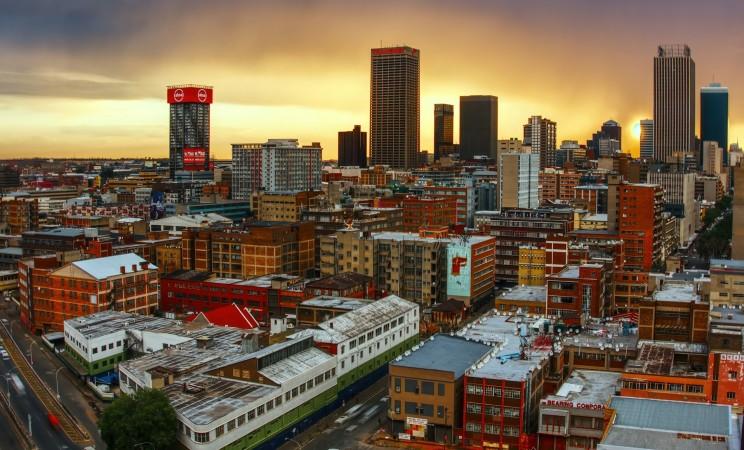
Johannesburg, South Africa - © Simon Hurry
Top Attractions in Johannesburg
Johannesburg offers a diverse range of attractions that highlight the city’s rich history, cultural vibrancy, and modern excitement. Each of these must-visit sites provides a unique perspective on Johannesburg.
Apartheid Museum
This pivotal museum offers an in-depth exploration of South Africa’s apartheid era. Through compelling exhibits, multimedia presentations, and personal narratives, the Apartheid Museum provides a sobering yet enlightening journey into the country’s struggle for equality. Visitors can walk through recreated historical settings and view artifacts that paint a vivid picture of this critical period in South Africa’s history.
Gold Reef City
A thrilling destination for families and history enthusiasts alike, Gold Reef City is a theme park that doubles as a living museum. Built on an old gold mine, it offers interactive exhibits and rides that delve into Johannesburg’s gold rush past. Attractions include a reconstructed mining town, underground mine tours, and exhilarating amusement rides, making it a perfect spot for fun and learning.
Nelson Mandela Square
Nelson Mandela Square, located in the center of Sandton, is a thriving public place honoring South Africa's cherished leader. The square features a grand statue of Nelson Mandela, surrounded by upscale shops, diverse dining options, and lively street performances. It’s a great place to soak in Johannesburg’s modern charm while paying homage to a key figure in the country’s history.
Maboneng Precinct
Maboneng, formerly a disadvantaged region, is now one of Johannesburg's trendiest districts. Known for its artistic flair and vibrant community spirit, Maboneng is home to art galleries, creative studios, and a bustling market. Visitors can explore the eclectic mix of street art, enjoy a meal at one of the many trendy eateries, or shop for unique handcrafted goods. The precinct also hosts regular events and festivals, adding to its dynamic atmosphere.

Apartheid Museum display - © Michael Schofield
Must-Try Dishes in Johannesburg
Johannesburg’s culinary tradition is a reflection of South Africa’s diverse food culture that offers many must-try local dishes for anyone visiting. These dishes not only offer a taste of Johannesburg’s local flavors but also provide a window into the broader culinary traditions of South Africa.
- Bunny Chow: Originating from Durban but beloved throughout South Africa, Bunny Chow features a hollowed-out loaf of bread filled with spicy curry. It’s a hearty, flavorful street food that’s both satisfying and versatile.
- Boerewors: This traditional South African sausage is produced from a combination of beef, pork, and spices and is popular during barbecues. Often served with pap (maize porridge) and a spicy tomato relish, boerewors is a true taste of South African cuisine.
- Pap and Chakalaka: Pap is a staple maize dish similar to polenta, and chakalaka is a spicy vegetable relish that complements it perfectly. This combination is a popular side dish at local meals and gatherings.
- Vetkoek: Deep-fried bread that’s crispy on the outside and soft on the inside. Vetkoek is often enjoyed with a variety of fillings, from minced meat to sweet syrup, making it a versatile and satisfying snack.
- Cape Malay Curry: Known for its fragrant spices and complex flavors, Cape Malay curry features tender meat cooked in a rich, aromatic sauce. This dish reflects the diverse culinary influences of South Africa’s Cape Malay community.
- Shisa Nyama: Translating to "burn the meat," Shisa Nyama is a popular South African barbecue experience where diners grill meat over an open flame. It's a convivial and delectable culinary ritual that is frequently shared with friends and family.
- Koeksisters: A sweet treat that consists of twisted dough, deep-fried until crispy, and then soaked in syrup. Koeksisters are a traditional South African dessert that’s both sweet and sticky, perfect for those with a sweet tooth.
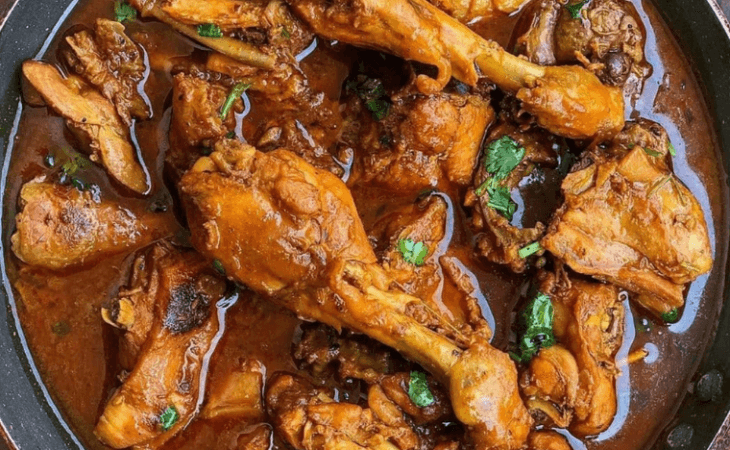
Cape Malay Curry - © Hari Ghotra
Festivals & Local Celebrations
Johannesburg is alive with energy and cultural vibrancy throughout the year, thanks to its dynamic festivals and local celebrations. These festivals and celebrations provide a vibrant and engaging way to experience Johannesburg’s cultural richness and community spirit.
Johannesburg International Motor Show
Held every two years, this premier automotive event is a showcase of the latest innovations in the automotive industry. The Johannesburg International Motor Show attracts car enthusiasts and industry professionals from around the globe, featuring displays of luxury vehicles, cutting-edge technology, and concept cars. It’s a must-visit for anyone passionate about automobiles and the future of driving.
Joy of Jazz Festival
Celebrated annually, the Joy of Jazz Festival is one of Africa’s leading jazz events, attracting top international and local jazz musicians. This festival spans several days and takes place in various venues across Johannesburg, offering a mix of live performances, workshops, and masterclasses. Music lovers can enjoy world-class performances in an atmosphere that celebrates jazz in all its forms.
Joburg City Festival
This annual festival celebrates Johannesburg’s rich cultural diversity and creative spirit. It features a variety of events, including live music performances, dance shows, art exhibitions, and food markets. The festival takes place in various locations throughout the city, offering something for everyone and showcasing Johannesburg’s unique cultural landscape.
Turffontein Racecourse Events
Known for its horse racing heritage, Turffontein Racecourse hosts several exciting events throughout the year, including major horse racing meets and social gatherings. These events draw crowds from across the city and beyond, providing a thrilling experience for both racing enthusiasts and casual visitors.

Joy of Jazz Festival - © TimesLIVE
What to Do in Johannesburg
Johannesburg is a city brimming with activities and attractions that cater to a variety of interests. These activities offer diverse ways to experience Johannesburg, from engaging with its history and culture to enjoying its natural beauty and modern entertainment options.
- City Tours: Discover Johannesburg’s rich history and modern landmarks with city tours. These tours often include visits to key attractions and you can choose from walking tours, bus tours, or even cycling tours to suit your preference.
- Wildlife Safaris: Experience the thrill of an African safari with day trips to nearby reserves like the Lion & Safari Park or the Pilanesberg National Park. These excursions offer opportunities to see the Big Five (lion, leopard, elephant, buffalo, and rhino) and other wildlife in their natural habitat, providing a taste of the African bush close to the city.
- Art Galleries and Museums: Dive into Johannesburg’s vibrant arts and culture scene by visiting local galleries and museums. The Johannesburg Art Gallery, one of Africa’s largest art collections, features both South African and international works. The Wits Art Museum also offers impressive exhibitions showcasing contemporary and traditional art.
Shopping in Johannesburg
Johannesburg’s shopping options cater to all tastes and budgets, from bustling markets to upscale retail centers. Each of these shopping destinations provides a distinct experience, allowing visitors to discover Johannesburg’s diverse retail offerings.
- Neighbourgoods Market: Located in Braamfontein, this market is a vibrant hub for food lovers and artisans. It offers a wide range of fresh produce, gourmet foods, and unique crafts, making it a great spot to sample local flavors and shop for handmade goods.
- Sandton City: Sandton City offers a high-end retail experience for visitors. This luxury mall features a variety of international and local brands, from designer fashion to exclusive jewelry, set in a modern and stylish environment.
- The Market Theatre Complex: This cultural venue also houses a market that sells an eclectic mix of crafts, art, and vintage items. It's a great location to get unique souvenirs and support local craftspeople.

Wildlife Safari Tours in Pilanesberg National Park - © South Africa Nature Reserves
Weather in Johannesburg: Best Time to Visit
Understanding Johannesburg’s seasonal weather trends helps in planning your visit to align with the activities and experiences you wish to enjoy. Each season offers distinct advantages, from summer’s lively festivals to winter’s cozy indoor events.
Spring in Johannesburg
Spring brings progressively rising temperatures ranging from 10°C to 25°C (50°F to 77°F) and occasional rains. The city’s gardens and parks burst into color with blooming flowers, making it an ideal time for nature walks and outdoor festivals. Spring is also a great season for cultural exploration, with many local festivals and markets showcasing Johannesburg’s creative spirit and vibrant community life.
Summer in Johannesburg
Johannesburg experiences warm and sunny weather with temperatures ranging from 15°C to 25°C (59°F to 77°F). This season also brings afternoon thunderstorms that provide a refreshing break from the heat. Summer is ideal for exploring outdoor attractions such as the Johannesburg Botanical Garden and taking day trips to nearby wildlife reserves. The vibrant city festivals and events also peak during this time, making it a lively period for tourists.
Autumn in Johannesburg
Autumn ushers in cooler temperatures and clear skies, with daytime temperatures ranging from 10°C to 22°C (50°F to 72°F). This season is perfect for enjoying outdoor activities like hiking and city tours, as the weather is pleasant and conducive to exploring Johannesburg’s cultural and historical sites. Autumn also marks the start of the cultural season with various art and music events taking place.
Winter in Johannesburg
Winter in Johannesburg is moderate and dry, with temperatures ranging from 0°C to 18°C (32°F to 64°F). The sunny days and chilly nights make it a great time for outdoor excursions, including visits to nearby nature reserves and exploring the city’s vibrant art scene. Winter is also a good season for attending indoor events, such as theater performances and live music shows, as the cooler weather makes indoor activities more enjoyable.

Any day is a good day to visit Lion & Safari Park - © Lion & Safari Park Official
Essential Travel Information
Getting Around Johannesburg
- Public Transit: Johannesburg’s public transit system includes buses, trains, and minibus taxis. The Gautrain is a high-speed train that connects key areas, including the airport, Sandton, and Pretoria while buses and minibus taxis are commonly utilized for local transportation.
- Car Rentals: Renting a car is a popular option for exploring Johannesburg and its surroundings. Major rental agencies offer a range of vehicles that gives you flexibility to visit various attractions at your own pace.
- Ride-Sharing Services: Ride-sharing apps are widely used in Johannesburg. They provide a convenient and reliable way to get around the city, with the added benefit of cashless payments.
- Taxis: Traditional taxis are also available, though they may not be as reliable or regulated as ride-sharing services. It is recommended that you select trustworthy cab services and agree on rates in advance.
ATM & Banking Services
In Johannesburg, accessing banking services is straightforward with numerous options available to visitors. ATMs are widely scattered throughout the city, accepting international credit and debit cards, making it easy to withdraw cash as needed. Banks offer a range of services, including currency exchange and account management, with many branches located in key areas. Credit and debit cards are widely accepted at most establishments, but it's wise to carry some cash for smaller purchases or in case of technical issues with card payments.
Where to Stay in Johannesburg
- Luxury Hotels: For a high-end experience, Johannesburg features several luxurious hotels that provide top-notch amenities such as fine dining, spa services, and stunning city views. These properties offer an indulgent stay with exceptional service and elegant surroundings.
- Boutique Hotels: If you prefer a more intimate and personalized experience, consider staying at one of Johannesburg’s boutique hotels. These establishments often feature unique decor, exceptional service, and a charming atmosphere, adding a special touch to your stay.
- Mid-Range Hotels: For a comfortable yet affordable option, mid-range hotels in Johannesburg offer great value with essential amenities, including free Wi-Fi, breakfast, and convenient locations near major attractions.
- Budget Lodgings: Budget travelers will find a variety of options, including hostels and guesthouses. These budget-friendly accommodations often focus on community and culture, providing a more casual and social environment with communal spaces and organized activities.
Articles for you
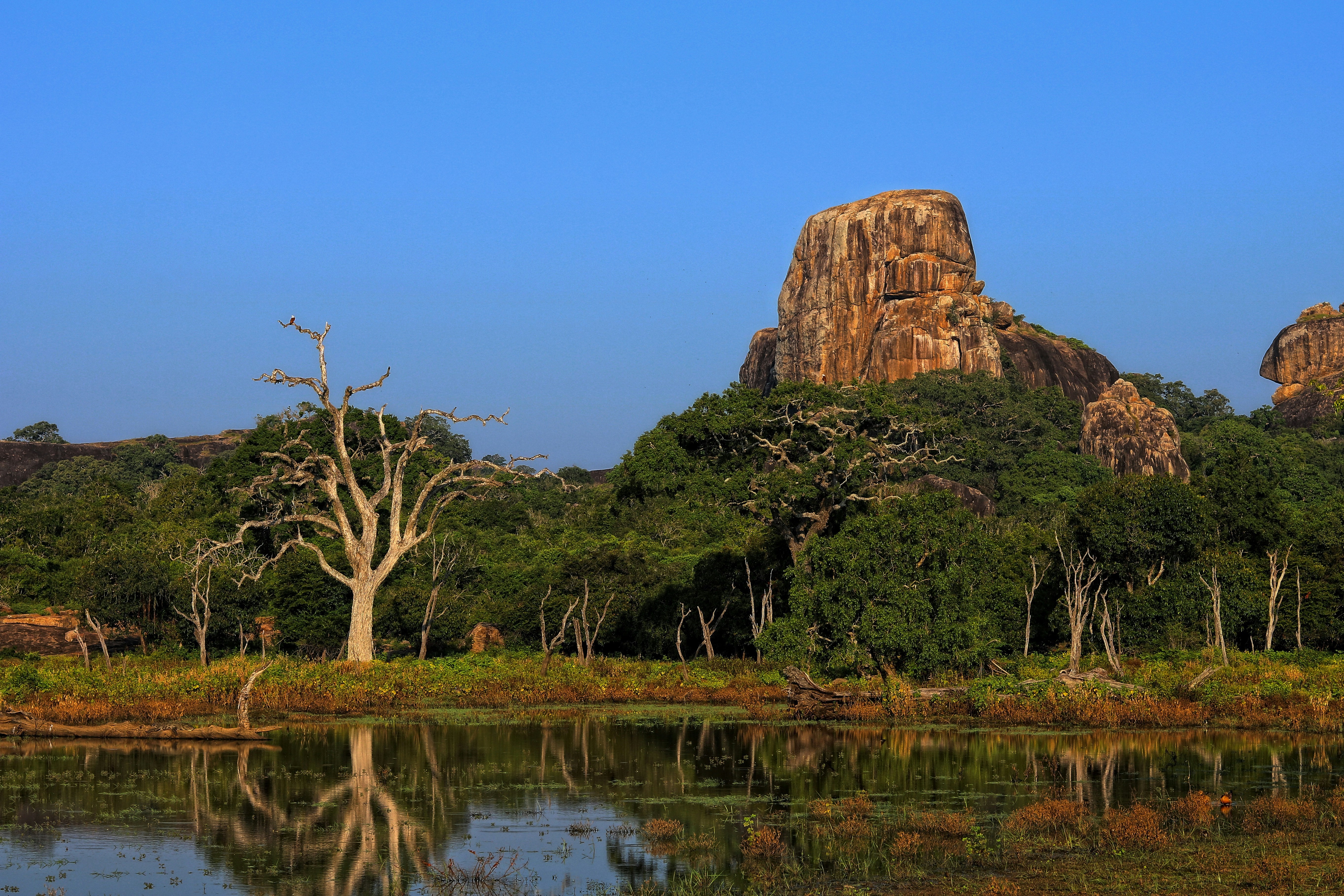
Explore Yala National Park - Sri Lanka Travel, Asia
Tucked away in Sri Lanka’s southeastern corner, Yala National Park is where wild nature meets deep tradition. Known worldwide for its leopard population, the park is also home to elephants, sloth bears, crocodiles, and hundreds of bird species. Beyond wildlife, Yala opens doors to a cultural landscape dotted with ancient temples, Buddhist ruins, and coastal villages. For travelers seeking more than just a safari, Yala offers a chance to explore eco-tourism, local communities, and sacred heritage sites.
Population: The Yala National Park area doesn’t have a human population.
Economy: The economy around Yala National Park thrives on a blend of eco-tourism, agriculture, and local services. Safari tours, eco-lodges, and cultural experiences drive steady income for nearby towns like Tissamaharama and Kataragama, supporting thousands of families.
Landmarks: Famous for Block I of Yala and wildlife encounters, including elephants, sloth bears, crocodiles, and exotic bird species.
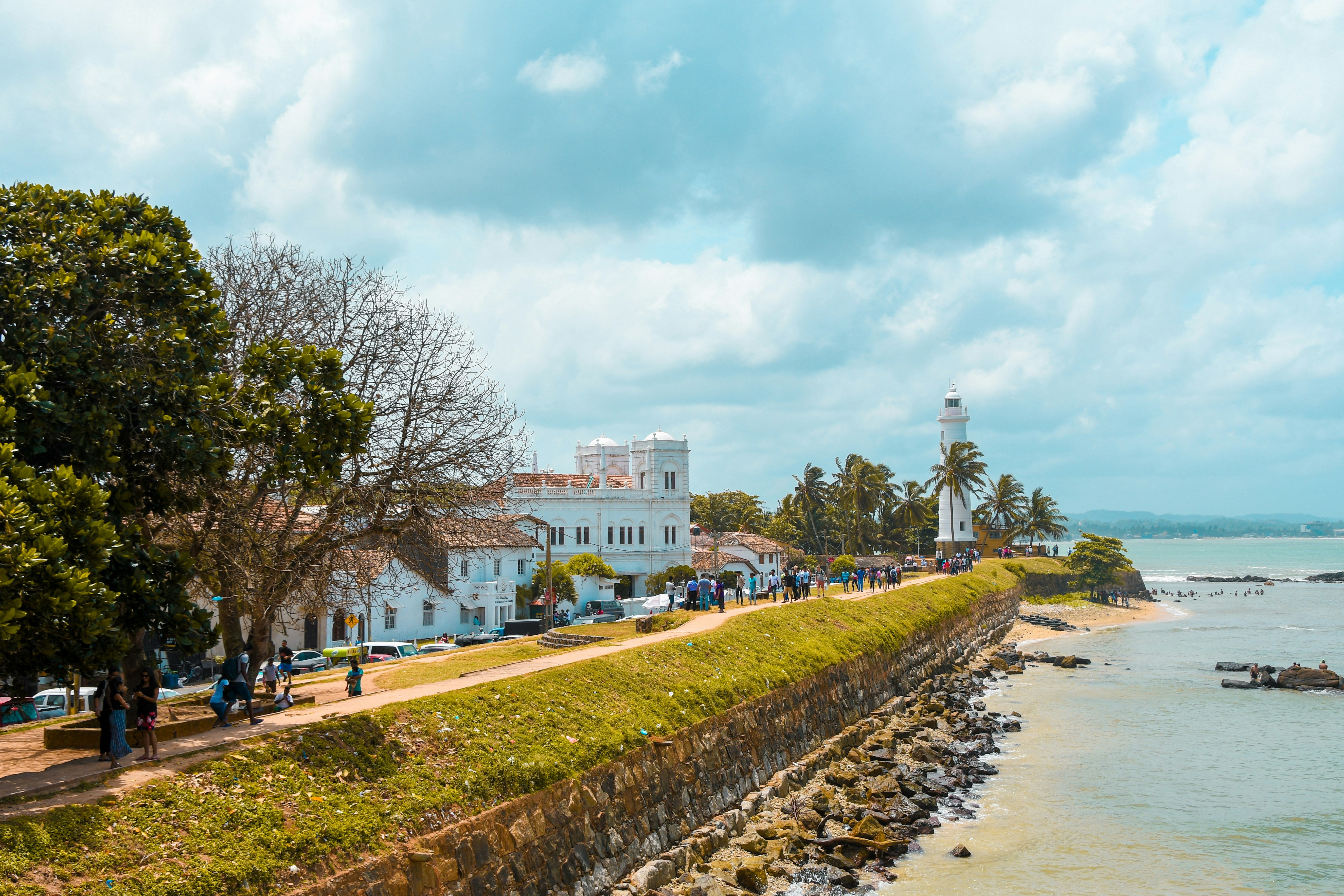
Explore Galle - Sri Lanka Travel, Asia
Nestled on Sri Lanka’s southern coastline, Galle is a vibrant city where history meets the sea. Its cobbled streets, colonial architecture, and serene beaches make it a must-visit destination for travelers seeking a blend of culture, adventure, and relaxation. A UNESCO World Heritage site, Galle captivates visitors with its Dutch Fort, bustling markets, and friendly locals. Whether you’re exploring the ramparts at sunset or savoring fresh seafood by the shore, Galle promises an unforgettable journey into Sri Lanka’s heritage.
Population: Approximately 113,000 in 2023.
Economy: Galle’s economy thrives on tourism, trade, and fisheries. The city’s historic fort, colonial architecture, and coastal charm draw thousands of international visitors each year, making tourism its main economic driver. Fishing remains vital for local livelihoods, supplying fresh seafood across the region.
Landmarks: Famous for the Galle Fort, Dutch Reformed Church & Maritime Museum, and Unawatuna Beach.
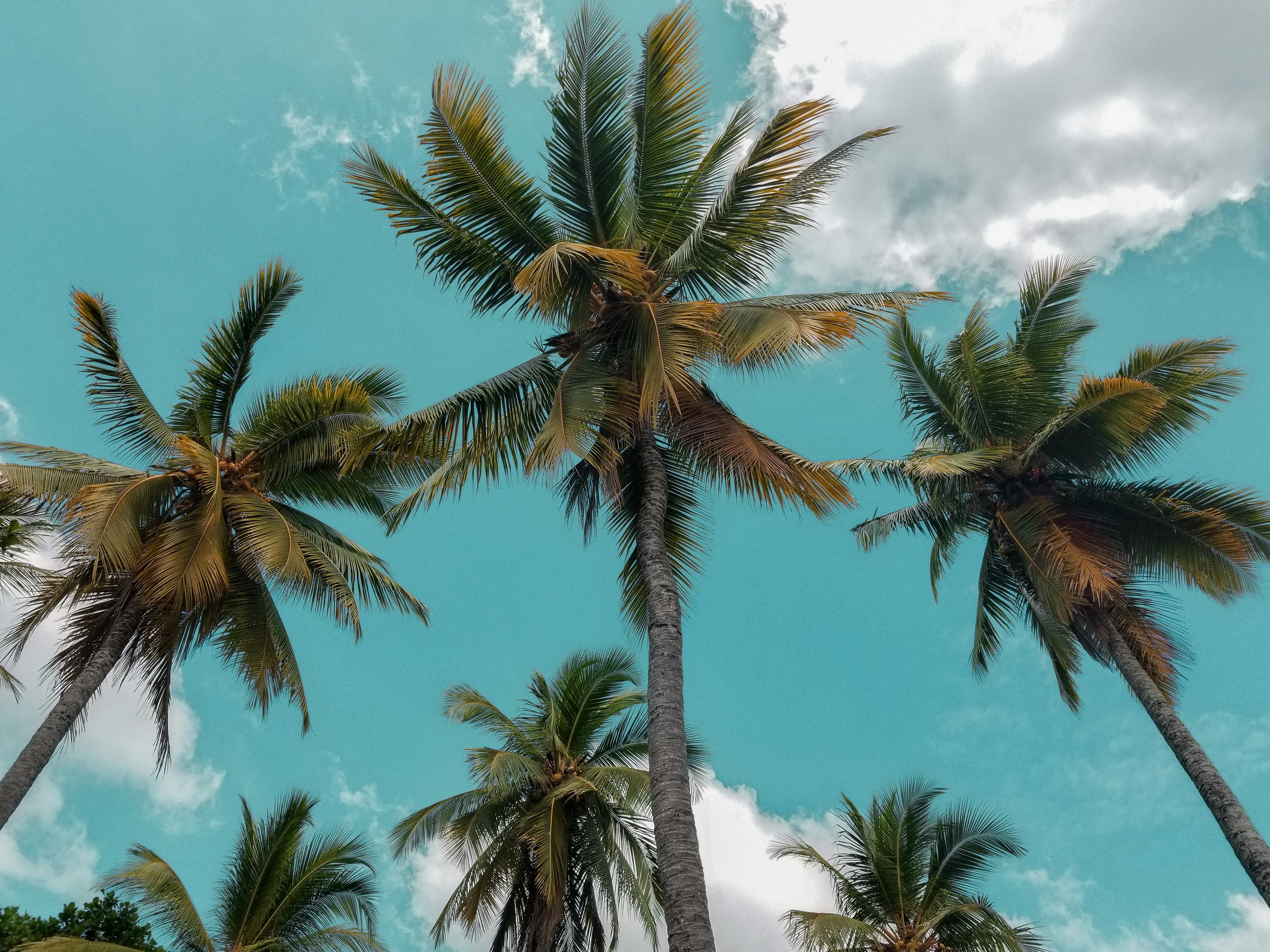
Explore Bentota - Sri Lanka Travel, Asia
Nestled along Sri Lanka’s southwestern coast, Bentota is a tropical paradise that blends golden beaches, vibrant culture, and thrilling adventures. Famous for its calm waters, luxury resorts, and scenic river estuary, Bentota has become a top destination for travelers seeking both relaxation and authentic experiences. From serene beach walks at sunrise to adrenaline-pumping water sports, this coastal town offers a perfect balance of leisure and exploration. With its proximity to Colombo and Galle, Bentota is easy to reach, making it an ideal stop for both short escapes and extended holidays.
Population: Approximately 37,000 in 2023.
Economy: Bentota’s economy thrives mainly on tourism, which drives local businesses such as hotels, restaurants, and wellness retreats. The town also benefits from fishing, coconut cultivation, and handicrafts like wood carving and batik textiles. Many residents rely on the growing demand for water sports and Ayurvedic treatments, making tourism the backbone of both income and employment in the area.
Landmarks: Famous for Bentota Beach, Bentota River Safari, and Kande Vihara Temple.
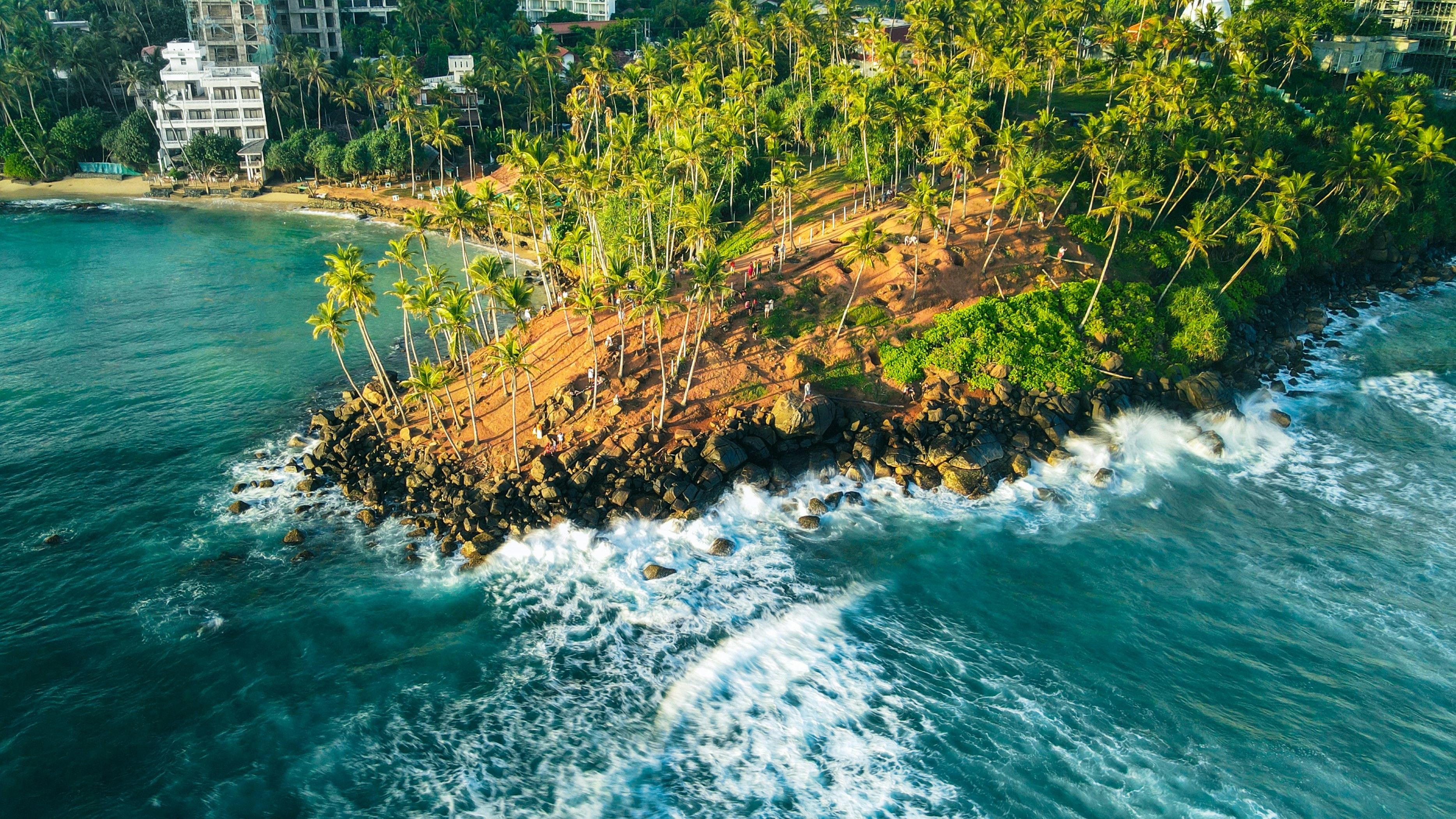
Explore Mirissa - Sri Lanka Travel, Asia
Mirissa is a charming coastal town on Sri Lanka’s southern shoreline. Known for its golden beaches, turquoise waters, and vibrant marine life, it has become a must-visit stop for travelers exploring the island. Many come for whale watching, surfing, and sunset views at Coconut Tree Hill, but Mirissa offers much more than postcard beauty. The fishing boats you see anchored by the bay carry generations of stories. Local traditions, delicious cuisine, and a laid-back rhythm of life shape every visitor’s experience.
Population: Approximately 4,700 in 2023.
Economy: Mirissa’s economy is largely shaped by its coastal location. Fishing has long been the backbone of local livelihoods, with generations relying on the Indian Ocean for income. In recent decades, tourism has become the main driver of growth, thanks to whale watching, surfing, and beachside hospitality.
Landmarks: Famous for Mirissa Beach, Coconut Tree Hill, and Parrot Rock Bridge.
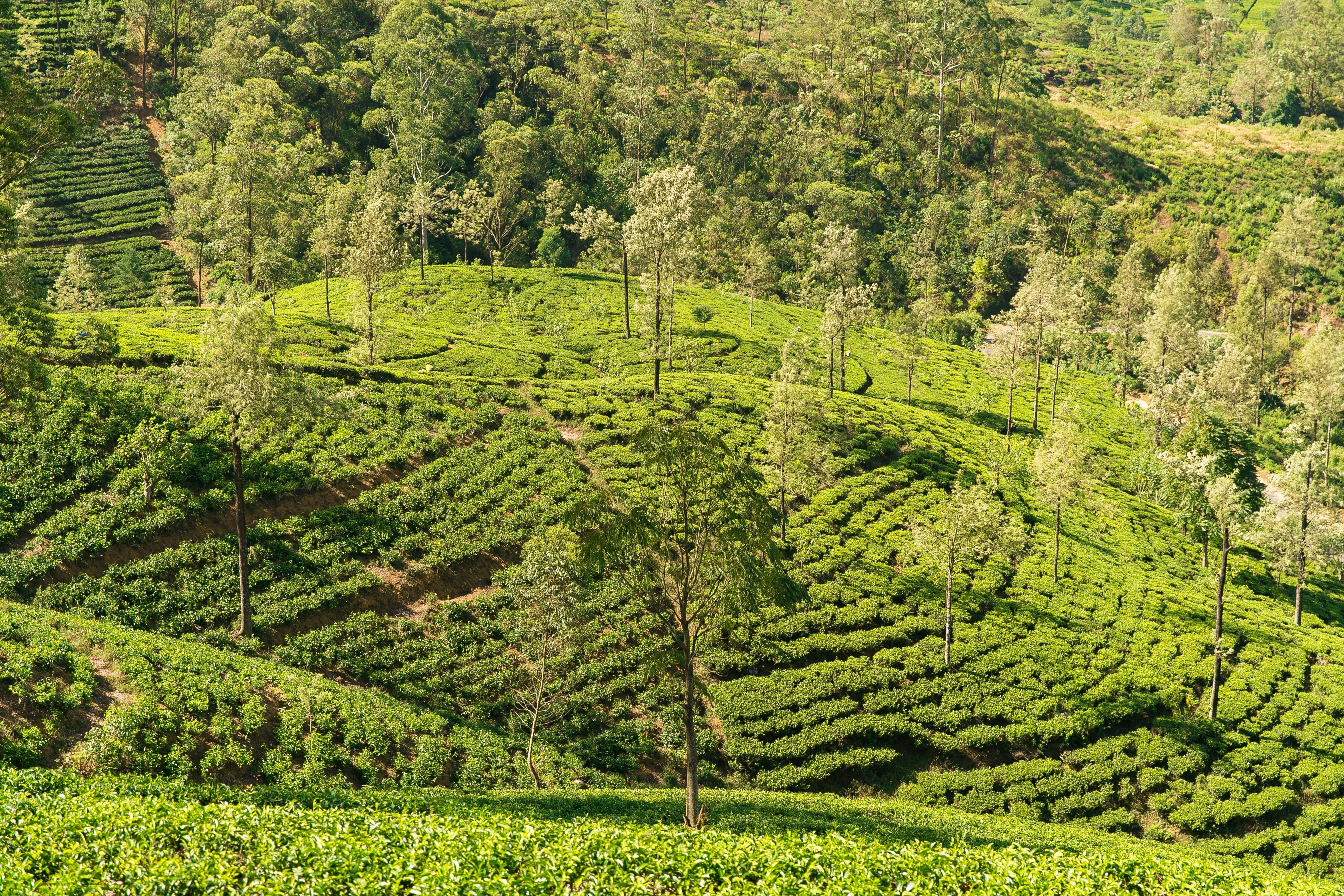
Explore Nuwara Eliya - Sri Lanka Travel, Asia
Tucked away in the Central Highlands of Sri Lanka, Nuwara Eliya is often called “Little England”. With its rolling tea plantations, cool misty mornings, and colonial charm, this mountain town feels like a step into another world. Travelers come here to breathe fresh air, walk through flower gardens, sip the finest Ceylon Tea, and enjoy a pace of life far from the island’s busy cities. Whether you’re drawn by scenic landscapes, heritage architecture, or the warmth of its people, Nuwara Eliya is a destination that blends nature, culture, and history in perfect harmony.
Population: Approximately 781,000 in 2023.
Economy: Nuwara Eliya’s economy thrives mainly on tea production, as it sits in the heart of Sri Lanka’s central highlands, famous worldwide for Ceylon Tea. The city also benefits from a growing tourism industry, attracting visitors with its colonial charm, cool climate, and scenic landscapes.
Landmarks: Famous for Gregory Lake, Hakgala Botanical Garden, and Victoria Park.
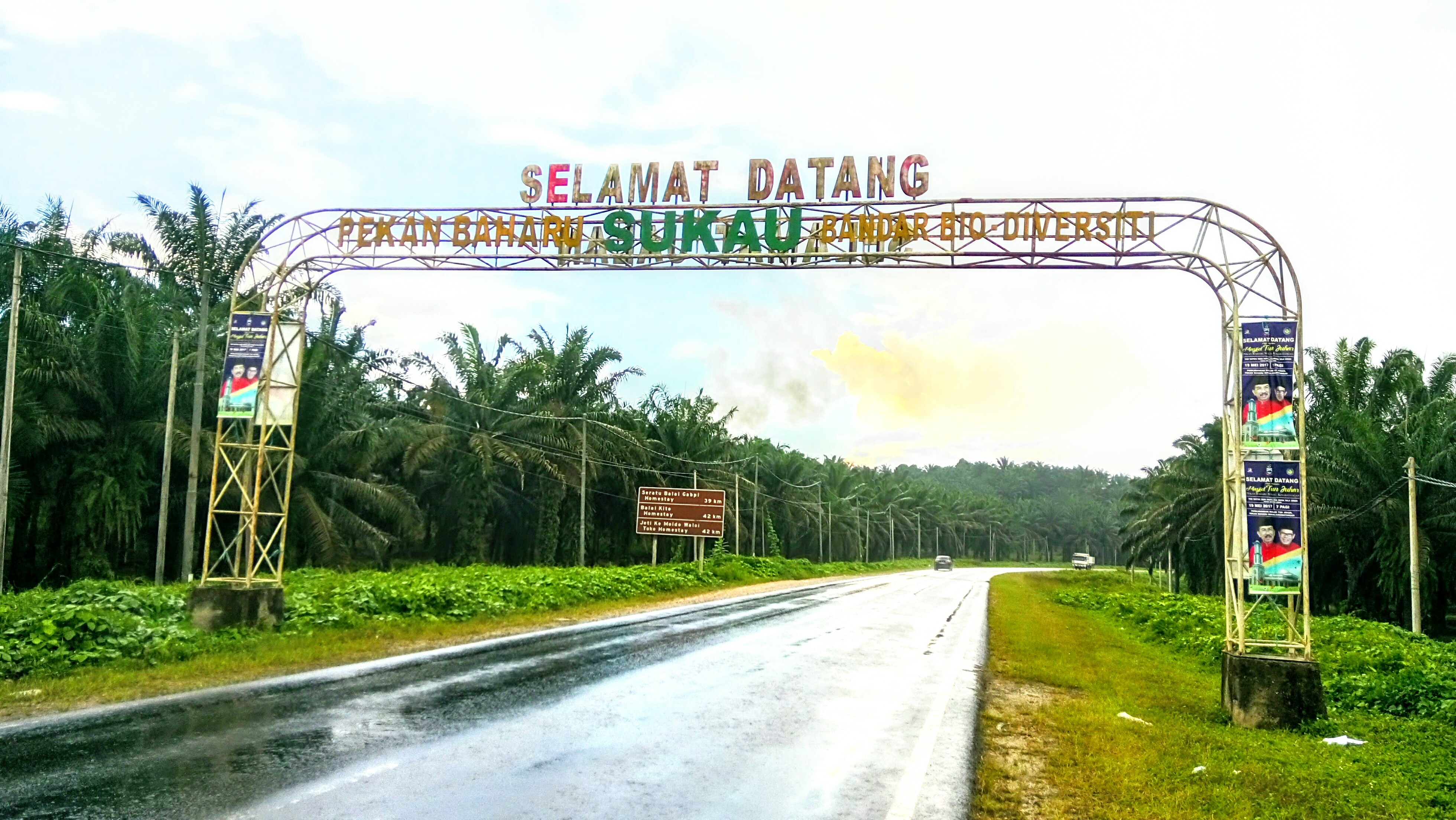
Explore Sukau - Malaysia Travel, Asia
Nestled on the banks of the Kinabatangan River in Sabah, Malaysian Borneo, Sukau is a destination where wildlife, culture, and conservation come together. Known as one of Asia’s top spots for river safaris and eco-tourism, this quiet village offers a front-row seat to encounters with Bornean orangutans, pygmy elephants, proboscis monkeys, and exotic birdlife.
Population: Approximately 1,400 in 2019.
Economy: Sukau’s economy is shaped by its riverine location and natural resources. Traditionally, the Orang Sungai community relied on fishing, small-scale farming, and forest gathering for their livelihood. Today, the village has shifted toward eco-tourism, with river cruises, jungle trekking, and homestays providing income.
Landmarks: Famous for the Kinabatangan River cruises, Gomantong Caves, and Ox-bow lakes and wetlands.
